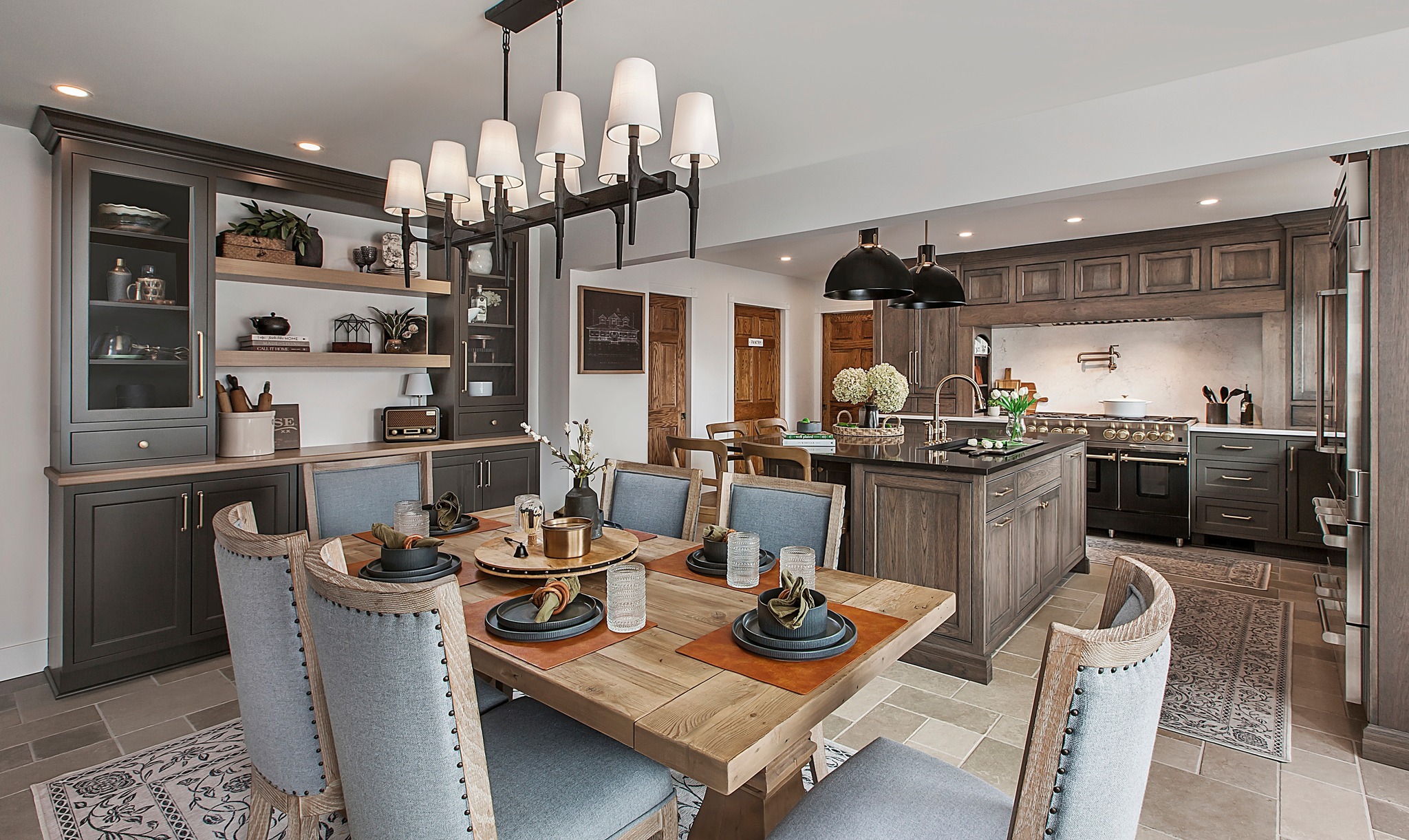Here’s the Truth: The Light Center’s Guide to Lighting Consistency
Lighting is one of the most powerful design tools in your home, but it’s also one of the trickiest. Homeowners often ask: “Should all my light fixtures match throughout the house?” The short answer? Not necessarily. A thoughtful lighting plan strikes the balance between consistency and variety, creating a home that feels cohesive without looking flat or overly uniform.
In this guide, we’ll break down when matching makes sense, when it’s best to mix styles, and how to strike the perfect balance for a home that feels timeless, welcoming, and uniquely yours.
Why Lighting Consistency Matters
Lighting is more than a finishing touch; it creates flow from room to room. Too much variation can feel chaotic, but too much sameness can feel uninspired. A cohesive lighting strategy makes your home feel intentional and well-designed.
When Matching Works Best:
There are times when consistency truly matters. Matching fixtures can:
- Create visual flow in open-concept spaces
- Enhance resale value by appealing to broad buyer preferences
- Highlight architectural styles (e.g., modern farmhouse, mid-century, or craftsman)
- Keep the focus on other design elements like bold paint, art, or furniture
When It’s Okay to Mix Lighting Styles
On the flip side, mixing lighting finishes or styles can add character and dimension. Your home doesn’t need to feel like it was decorated in one afternoon. Lighting can evolve across spaces, just like furniture and décor.
Mixing Works Best When:
- You want to define spaces in an open floor plan (e.g., a rustic chandelier in the dining area paired with sleek pendants in the kitchen).
- You’re highlighting different moods (soft, romantic bedroom sconces vs. bright, functional kitchen lighting).
- You love eclectic design that blends old and new elements.
- You prefer lighting that complements, not competes, with each room’s unique personality.
How to Balance Matching and Mixing
The key is not whether fixtures match, but whether they coordinate. Think of your lighting like a wardrobe: not every piece needs to match perfectly, but everything should work together.
Here are a few Light-Center-approved strategies:
1. Choose a Dominant Finish, Then Layer Accents
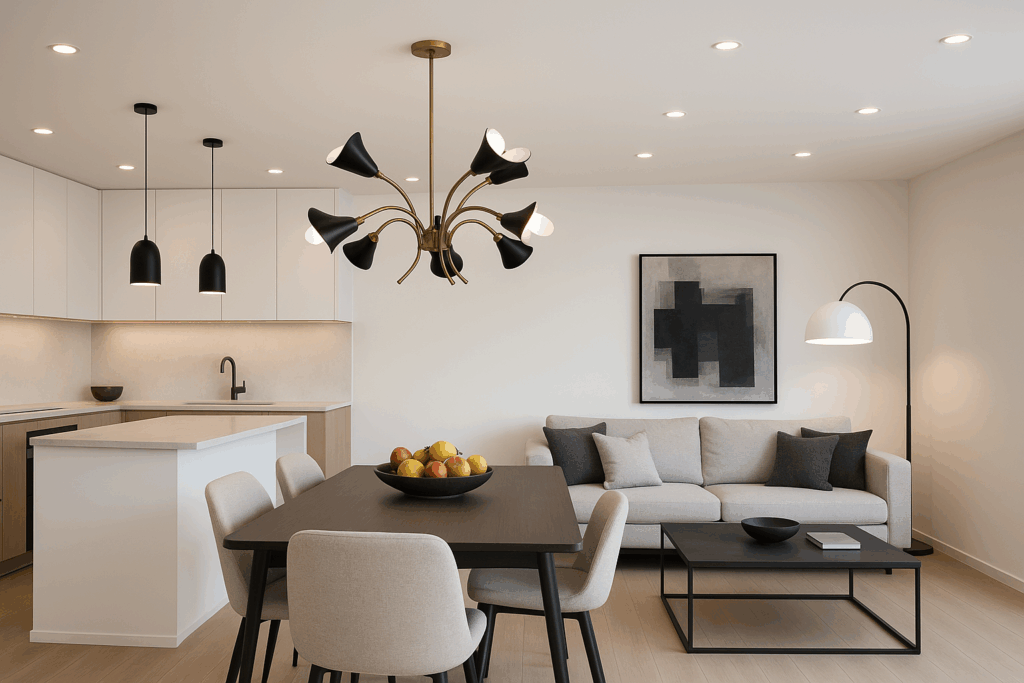
Pick one finish (like matte black, brushed nickel, or warm brass) as your anchor. Use it in your main or most visible fixtures, then layer in complementary finishes elsewhere. This approach creates a sense of flow throughout your home without feeling repetitive or boring. By keeping a primary finish consistent, you give your home a cohesive foundation that allows secondary finishes to feel intentional rather than random. Designers often recommend this strategy because it gives homeowners flexibility to add personality without losing overall harmony.
The Light Center Tip: Two finishes are ideal. Three can work if used carefully, but more than that may feel cluttered.
2. Repeat Shapes and Forms
Fixtures don’t have to match in finish if they share a similar shape or design detail. Round chandeliers, globe pendants, and circular sconces can all work together, even across different finishes. This creates a subtle thread of unity that ties spaces together in a way that feels elevated. Repetition of form is something the eye notices immediately, so even small similarities—like curves, lines, or shades—make a big impact. If you’re drawn to a mix of finishes but love a particular silhouette, repeating that shape across fixtures is an easy way to balance variety with cohesion.
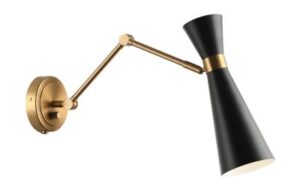
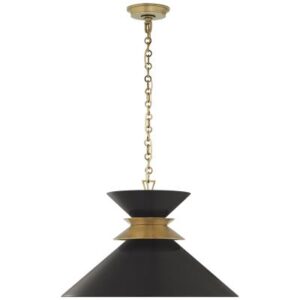
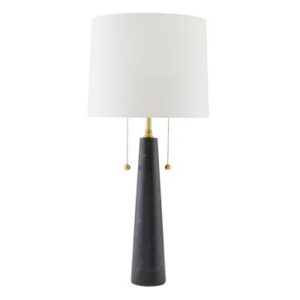
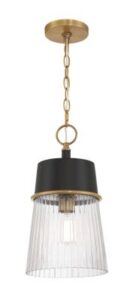
The Light Center Tip: Think repetition of geometry—round, linear, or lantern-like shapes.
3. Keep Scale in Mind
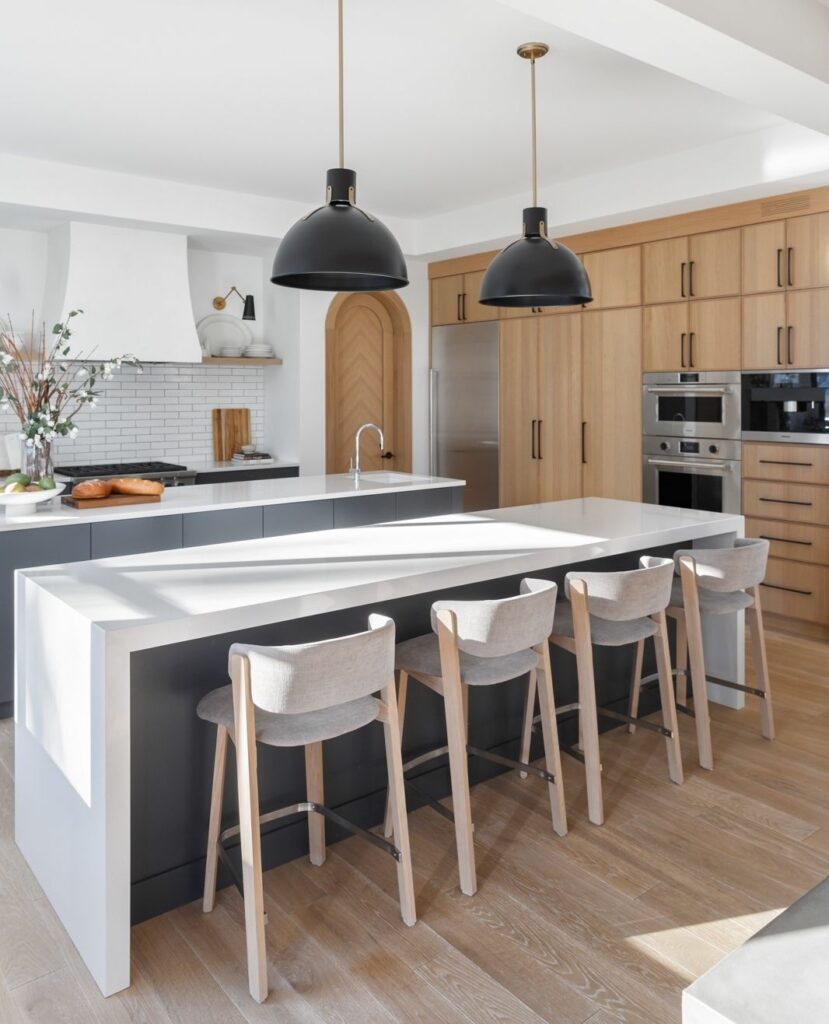
Even beautifully designed fixtures can feel wrong if they’re out of proportion. Matching scale creates harmony, even if finishes differ. For example, oversized pendants in a small kitchen can overwhelm the space, while tiny fixtures in a great room may disappear. Paying attention to proportion ensures that fixtures “speak the same language” even when styles vary. Scale is one of the most common design mistakes homeowners make—and one of the easiest to fix by measuring and planning ahead. Shop pendant lighting.
The Light Center Tip: For pendants, a general rule is 12–18 inches of fixture width per 4 feet of table length or island space.
4. Create Zones with Lighting
In open floor plans, lighting is a tool to define “rooms.” While fixtures should coordinate, you can choose different designs to mark different functions. This zoning effect helps large spaces feel more livable and intentional. For example, a dining area might feature a more dramatic chandelier, while the kitchen relies on functional pendants. Together, the fixtures tell a story of flow and purpose without all being identical.
The Light Center Tip: Keep the finishes consistent, but vary the fixture style slightly for each zone.
5. Use Accent Lighting to Play with Personality
Accent fixtures are where you can have fun. Statement sconces, bold lamps, or a unique chandelier can bring character without disrupting overall flow. Think of accent lighting as the jewelry of your home—it doesn’t have to match perfectly but should complement the overall “outfit.” Accent pieces are often the most memorable elements in a design, so don’t be afraid to let them shine. Powder rooms, hallways, or bedside sconces are great places to add personality with lighting choices.
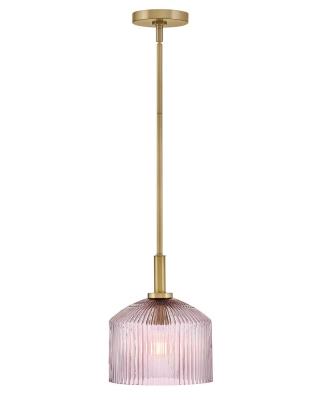
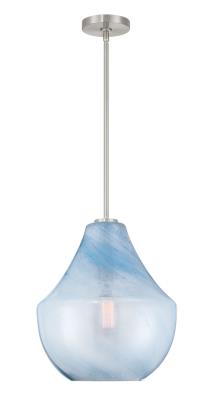
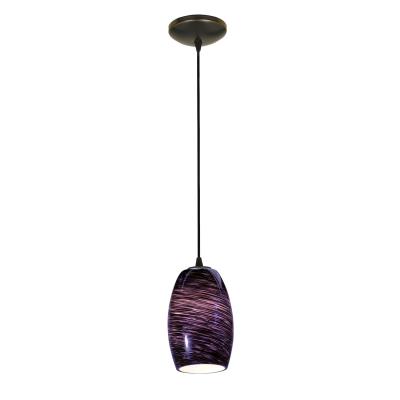
The Light Center Tip: In a neutral-toned home, add jewel-toned glass pendants in a powder bath for a pop of surprise.
6. Get Expert Help Early in the Process
Even with the best intentions, balancing finishes, shapes, and scale can feel overwhelming when you’re remodeling or building a home. A lighting expert (found at The Light Center) can take the guesswork out of fixture placement, coordination, and planning, saving you from costly mistakes down the line. Our team at The Light Center specializes in creating custom lighting plans that match your style, budget, and long-term goals. By walking through your home (or reviewing your plans), we’ll help you select fixtures that bring harmony to every space while supporting the way you live.
Ready to work with us? Book an appointment today!
The Mix vs. Match Debate: What Designers Really Think
At The Light Center, we often encourage homeowners to think less about “matching” and more about “cohesion.” A mix of lighting creates depth and personality—when done thoughtfully. Matching every single fixture in your home can feel sterile, while mixing every style under the sun can feel chaotic.
The sweet spot? Coordinated variety. A few repeating elements—like finishes, shapes, or scale—will tie everything together while still allowing personality to shine through.
Final Thoughts
Lighting sets the tone for your home—literally. By balancing consistency with variety, you can create a home that feels inviting and full of personality. Whether you lean toward matching fixtures for timeless flow or mixing for bold character, a thoughtful plan ensures your home feels intentional and inviting.
Need help deciding? Our lighting experts at The Light Center are here to guide you. With free showroom consultations and personalized in-home design services, we’ll help you find the perfect mix (or match) for your home.
Frequently Asked Questions
1. Do all my light fixtures need to match?
No! Light fixtures don’t need to match exactly. The key is coordination. Repeat elements like finishes, shapes, or scale across rooms for flow. If you’re not sure where to start, our lighting experts can walk you through ideas room by room—book a consultation and we’ll help you create a plan that feels cohesive and uniquely yours.
2. How many finishes can I mix in one home?
Two finishes are ideal for most homes. Three can work if one acts as an accent and is repeated thoughtfully. Want to see how this looks in real spaces? Explore our inspiration by room, or stop by our showroom to see how different finishes play together in person.
3. What’s the easiest way to make lighting cohesive?
Choose one dominant finish and repeat it in visible spaces, then add variety through shapes, sizes, or accent lighting. Our team at The Light Center can simplify this process for you—whether it’s a quick showroom visit or an in-home consultation, we’ll help you build a cohesive look that fits your style and budget.




